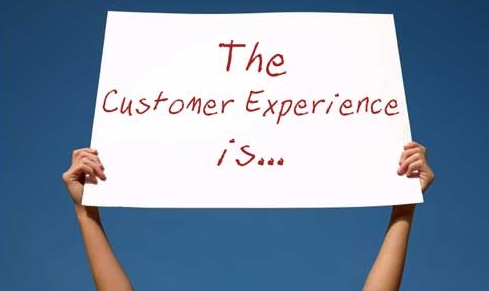Customer Experience Isn’t What You Think It Is
Customer experience is a hot topic. Everywhere there are people buying it, selling it, telling their bosses about it, reading books on it. Maybe even dreaming about it.

The trouble is there are huge misconceptions about customer experience. Too many people are buying the wrong things. Too many people are getting away with selling the emperor’s new clothes. Let’s address some of these misconceptions.
The customer is not always right
People equate customer experience with doing what your customers say. That listening to customers will unlock expansive growth. That doing what they ask will give you competitive advantage.
It won’t. Acting blind on what the customer wants can distract from what the customer actually needs, and can compromise the experience. Listening to customers is critical, yes, but the real work is in deciding what to listen to and what to ignore. You need to decide where to spend your limited time, money and resources for the best return.
Focus is critical to great customer experiences. Everyone finds it hard, but the rewards are huge.
The interface is not the experience
As a marketing manager you have a website budget and you want to create a great customer experience. But how do you know whether you’re buying the right thing?
Daniel Kahneman says that when faced with a difficult question, people unconsciously choose to answer an easier question instead. In a presidential election, rather than answering the difficult question of whose policies will work, most people answer the easy question of which candidate they like best.
Something similar happens with customer experience.
Businesses end up buying visually appealing, flashy, pretty and shiny interfaces or marketing materials; all of which tend to be very expensive. Why? Because answering ‘does it look pretty?’ is much easier than answering ‘is it a good customer experience?’
I can’t tell you how many shiny things I’ve seen that deliver no value to the customer. And value is what it’s all about…
Value trumps everything else
Yes, talking about value propositions is boring, but all great customer experiences start with a customer getting something they want. If it helps, you can call it meeting needs, satisfying a hidden desire or even damping an unrequited passion. I don’t care (and neither will your customers) but they’ll love you if you get it right.
With that in mind, these are the questions to ask:
- Who is your customer? (hint: it’s not ALL of your actual customers)
- What do they want?
- Why will they get it from you over someone else?
- Can you actually give it to them?
- How will giving it to them benefit you?
Find something genuinely valuable and you’ve got a customer experience strategy.
I love this stuff – talking to your business to tease out priority customers, discovering what those customers want, seeing what competitors are doing (they’re never as good as you fear!), assessing your capability to deliver, and checking that giving your customers what they want will actually benefit you (it’s amazing how many people miss this last step).
Experience design comes before requirements
Experience design isn’t just about making things that look nice, it’s about making things that work well – systems, websites, processes, call centre scripts, login flows and content strategy. Whatever it takes to make your customer experience strategy real, that’s experience design.
There are three reasons why the design process must come before requirements.
First, we never know the answer in advance. We know what the problem is, and what the goals are, but the answer is a mystery. This is difficult if you’re used to writing requirements up front, but it’s the truth.
Secondly, we find the answer by making new options and creating prototypes to make these options tangible. These prototypes are not just for customers, they’re for IT people, lawyers, content writers and marketing people too. They prompt comments, invite criticism and spark new ideas like nothing else.
Finally, we revise the prototypes until they work for customers. If you’ve never seen how reactions can be transformed by a single design revision you’ll have no idea how powerful this part is! It’s like magic.
You just can’t start with requirements. It’s the wrong way round.
The launch is only the first step
Too many people launch websites or unveil touchpoints and immediately forget about them. Yes, your project manager’s Gantt chart might be completed, but that’s a mirage.
You won’t get everything right first time. Even if you did, your customers’ expectations are a moving target. You need to continuously improve the experience, and you can’t do that without measurement.
Don’t just measure what’s easy to measure. Things like time on site, bounce rate and number of pages might be available in your default analytics setup but they’re rarely good experience metrics.
Instead, decide what matters and measure that. It might be scroll depth for content, conversion funnels for forms, completion rates for tasks or net promoter scores for touchpoints. Sometimes (shock horror!) you might need to speak to a customer or two. They don’t bite.
If you don’t measure, you won’t improve and your experience will fade and die.
It’s not me, it’s you
If you only take one thing away from this post, make it this: businesses don’t buy a customer experience, they buy into customer experience. It is ultimately your business’s responsibility to make it work, not mine. Any agency or consultant who tells you otherwise is lying.
It might sound like I’m washing my hands of your problem. I’m not. I’ll do everything I can to help you, but if you don’t listen in on stakeholder interviews, contribute to design workshops, come along to user testing sessions and fight for the customer during implementation, it won’t work.
You need to end up talking like you did all the work yourself. People like me can only help you get there.
